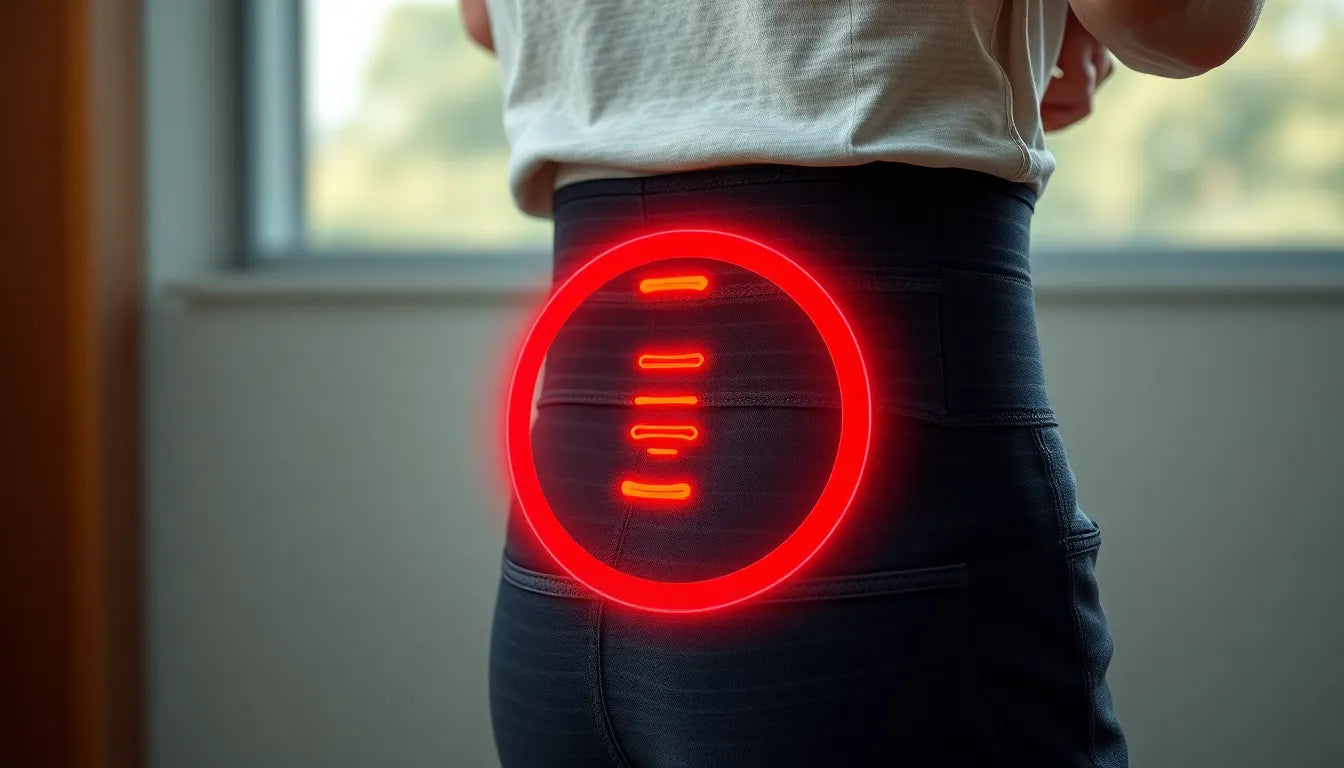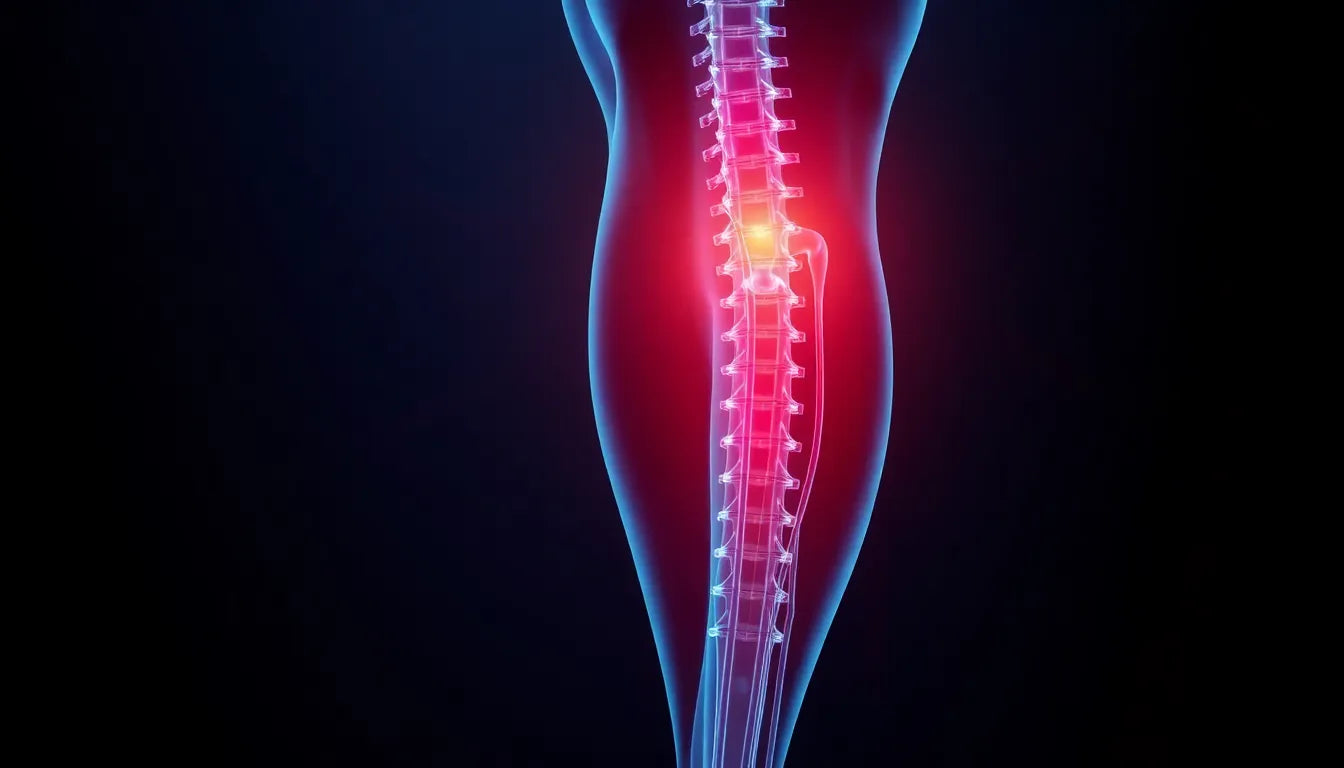A herniated disc is a common spine condition that can significantly impact one's quality of life. It occurs when the soft inner core of a spinal disc protrudes through its outer layer, often leading to pain, numbness, or weakness in the limbs. This condition is typically caused by factors such as aging, which naturally wears down spinal discs over time, or through sudden injuries and strenuous activities that put excessive pressure on the spine. Understanding the intricacies of how a herniated disc heals is crucial for anyone embarking on this recovery journey.
the importance of understanding the healing process
Grasping the stages of healing for a herniated disc is vital not only for managing expectations but also for ensuring a smoother recovery. Recovery from a herniated disc is not an overnight process; it involves a series of stages that require patience and persistence. By familiarizing yourself with these stages, you can better navigate your healing journey, making informed decisions about your treatment and lifestyle adjustments. This knowledge empowers you to actively participate in your recovery, optimizing outcomes and potentially reducing the duration of discomfort.
engaging questions for readers
Are you currently suffering from a herniated disc and wondering how long your recovery might take? What can you expect during the healing process? These are common questions for those dealing with this condition, and understanding the answers can provide significant relief and clarity. By exploring the typical healing timeline and the various stages involved, you can gain insights into what lies ahead and how best to support your body through this challenging time.
stages of healing: a detailed look
The healing journey of a herniated disc is a multifaceted process that unfolds over several stages. Understanding these stages can provide reassurance and clarity as you navigate through recovery. The initial phase, known as the inflammation stage, typically lasts from one to two weeks. During this time, the body responds to the injury with inflammation, resulting in pain and discomfort. This is a natural reaction as your body works to protect the affected area and begin the healing process. Initial care strategies such as rest, application of ice or heat, and anti-inflammatory medications can help manage symptoms and reduce inflammation.
Following the inflammation stage is the progressive improvement stage, which spans from two to twelve weeks. During this period, you may notice a gradual reduction in pain and an increase in mobility. This stage is crucial for setting the foundation for long-term recovery. Engaging in physical therapy and incorporating light exercises can significantly aid in rebuilding strength and flexibility. These activities should be carefully tailored to your condition and performed under professional guidance to avoid exacerbating the injury.
stabilization phase: solidifying recovery
As you progress into the stabilization phase, which typically occurs between six to twelve weeks, the body continues to solidify its recovery efforts. Although you may still experience mild flare-ups, this phase marks a significant milestone in the healing journey. Consistency in physical therapy and exercises remains vital to ensure that recovery is sustained and to prevent future recurrences. It's important to remain vigilant during this phase, as resuming strenuous activities too soon can hinder progress.
long-term healing and management
Beyond the twelve-week mark, the focus shifts towards long-term healing and management. At this stage, prevention and maintenance strategies become paramount to avoid future issues. Implementing lifestyle changes such as ergonomic adjustments in your daily activities and maintaining a regular exercise routine can significantly contribute to sustaining recovery. Additionally, managing weight and ensuring proper posture can help alleviate stress on the spine, reducing the risk of further complications.
recovery timelines: understanding the journey
Recovery timelines for a herniated disc vary greatly depending on the severity of the condition and individual factors. For minor cases, noticeable improvement can often be seen within four to six weeks. However, more severe cases may require six months to over a year for full recovery. Factors such as overall health, adherence to treatment plans, and the body's natural healing capabilities play crucial roles in determining the pace of recovery. It's essential to approach this journey with patience, as pushing too hard or too fast can lead to setbacks.
signs of healing: recognizing progress
Recognizing the signs of healing can provide encouragement and motivation throughout the recovery process. Key indicators include reduced pain, decreased numbness or tingling, and improved mobility. As the herniated disc heals, the regression of nerve compression is a crucial sign that the body is on the right track. Monitoring these symptoms and maintaining open communication with healthcare professionals can help ensure that your recovery is progressing as expected.
In conclusion, understanding the stages of healing and recognizing the signs of progress are essential components of recovering from a herniated disc. By following a structured recovery plan and making necessary lifestyle adjustments, you can support your body's natural healing process and work towards a pain-free future.
therapeutic interventions for herniated disc recovery
Supporting the healing journey of a herniated disc involves a combination of rest, physical therapy, and lifestyle adjustments. These interventions not only alleviate symptoms but also promote long-term recovery by strengthening the spine and surrounding muscles.
One of the most effective strategies is engaging in physical therapy. This involves tailored exercises that focus on stretching and strengthening the muscles that support the spine. A physical therapist can guide you through these exercises, ensuring they are performed correctly to avoid further injury. Regular sessions can help improve mobility, reduce pain, and enhance overall spinal health.
Rest is another crucial component of recovery. Giving your body time to heal is essential, especially during the initial stages of inflammation. However, it's important to balance rest with activity. Prolonged bed rest can lead to muscle weakness and stiffness, so incorporating light activities as advised by your healthcare provider can be beneficial.
Ergonomic adjustments in your daily life can significantly impact recovery. This includes setting up a workspace that supports good posture, using chairs with proper lumbar support, and avoiding activities that strain the back. Simple changes, such as using a standing desk or adjusting the height of your computer screen, can prevent further stress on the spine.
Anti-inflammatory medications and cold therapy can also play a role in managing pain and swelling. Over-the-counter medications like ibuprofen can reduce inflammation, while applying ice packs to the affected area can help numb pain and decrease swelling. These should be used as part of a comprehensive treatment plan under the guidance of a healthcare professional.
Below is a comparison of different interventions and their benefits:
| Intervention | Benefits |
|---|---|
| Physical Therapy | Improves mobility, strengthens muscles, reduces pain |
| Rest | Allows for initial healing, reduces inflammation |
| Ergonomic Adjustments | Prevents further strain, supports good posture |
| Anti-inflammatory Medications | Reduces pain and swelling |
| Cold Therapy | Decreases swelling, numbs pain |
frequently asked questions
How do I know my herniated disc is healing?
Signs of healing include reduced pain, increased mobility, and decreased numbness or tingling. As the herniated disc recovers, the regression of nerve compression is a positive indicator of progress.
What should I avoid during recovery?
During recovery, it's important to avoid activities that put excessive strain on the spine, such as heavy lifting, twisting motions, and prolonged sitting or standing without breaks.
When can I resume normal activities?
Gradually returning to normal activities is crucial. Consult with your healthcare provider to create a plan that allows you to safely increase activity levels without risking re-injury.
Are there any long-term effects of a herniated disc?
While many people recover fully, some may experience occasional flare-ups or chronic pain. Ongoing care, including regular exercise and ergonomic adjustments, can help manage these effects.
What lifestyle changes can aid in recovery and prevention?
Incorporating regular exercise, maintaining a healthy weight, and making ergonomic adjustments in your daily routine can support recovery and help prevent future issues. Focus on strengthening core muscles and practicing good posture to alleviate pressure on the spine.
In summary, understanding the healing process and implementing supportive interventions can significantly enhance recovery from a herniated disc. By addressing common concerns and making informed lifestyle changes, you can work towards a healthier, pain-free life.


















